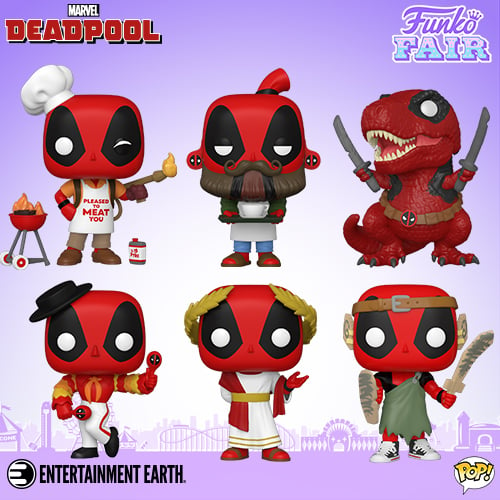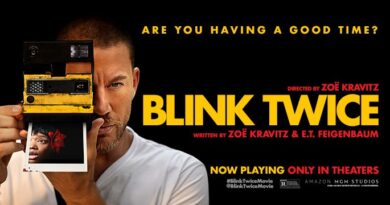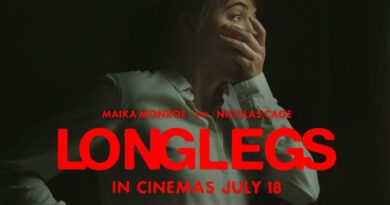An Invitation You Can Accept – “The Invitation” Movie Review
A few weeks ago, my wife received a mysterious message on WhatsApp: a photo of a wedding invitation, with a cute picture of a couple and their dog, a date (somewhere at the end of the month), and a place. Seemingly legitimate. The problem was that She didn’t know the happy couple, and we didn’t mention their last names or parents’ names in the order so we could know if they were related to us.
The invitation didn’t include anything but the picture, not even a hello message. “It must be a mistake or spam”, she said and decided to ignore it. “Absolutely not!”, I answered, “They want to invite us to a wedding to kill us! Maybe they are vampires who want to sacrifice you for some kind of cult!”. My wife looked at me doubtfully: “You and your stupid horror movies again?” she snapped. “The truth is, yes,” I answered in embarrassment. A few days later, the mystery was solved when a former colleague of my wife invited her to the wedding of her son, at the end of the month.
What’s The Plot Of The Invitation?
“The Invitation” starts roughly the same way and ends, after an hour and a half compressed and a little messy, with the feeling that everything could have been much better. Our heroine is Evelyn (Natalie Emmanuel, Missandei from “Game of Thrones”), who repeatedly begs people to call her “Evie” because apparently, it indicates control and power. Evie is a rather tormented New York artist, who works for a living in a high-end catering business that doesn’t excel at making carpaccio.
One day, colleague of hers equips her with a gift that the rich guests received – a bag with a DNA kit for building a family tree. Evie is intrigued. Her father died when she was 14, a few months ago she lost her mother and was left without relatives. She performs the genetic test and finds out about a close English cousin named Oliver Alexander, who quite by chance calls her shortly after and invites her to meet them. The first problem is that Oliver’s (Hugh Skinner) skin tone is white (“the whitest man I’ve ever seen”), while Evie is… um… slightly darker. Oliver tells her the story of her great-grandmother, a white woman who secretly had an affair with a black servant so that they had birth to a mixed-race son. He invites her to cousin Martin’s upcoming wedding, which could be an opportunity for her to return to her roots.
Despite the pleas of the good friend – who warns Evie that they will kill her to sell her kidney and find her body in a ditch – Evie decides to accept the invitation and arrives at the magnificent but creepy castle in an isolated English village. She meets the beleaguered manor, Walter de Ville (Thomas Doherty), and shows strength against the annoying butler.
The days pass, the wedding approaches, and Evie discovers some clear warning signs that something not kosher is going on there: bars impaled on the windows, for example. or strange noises at night. Or a library that is forbidden to enter due to “renovations”. Or maids who disappear one after the other. She will ignore everyone and fall in love with the owner of the mansion, until a magnificent dinner where the heroine will understand the secrets of the family and what her role in all that jazz is. At this stage, by the way, it is reasonable Presumably the seasoned horror viewer – or one who has made the big mistake of horror fans and watched the trailer before seeing the movie – will understand exactly what is going on.
💀 Killer Deals & Scary Recommendations 💀
🎭 Costumes & Accessories
HalloweenCostumes Fun Costumes Entertainment Earth
🛒 Online Shopping
AliExpress Amazon Walmart Etsy
🧛 Collectibles & Horror Brands
Funko Hot Topic Lego Spirit Halloween
🎢 Attractions & Tours
GetYourGuide Tiqets Viator Klook
📖 Blogs & Horror Sites
Bloody Disgusting iHorror Fangoria
🩸 Disclaimer: Some links are affiliate links. The price stays the same – it just helps keep the site alive 👻
With So Many Ideas, You Don’t See The Script
The first major problem with “The Invitation” is that the film is simply too loaded with ideas, or even agendas. Its starting point is essentially classical, with a plot structure that corresponds with the foundations of the 18th-century Gothic novel. Many of these books, some of which have of course been adapted into horror films, deal with a young woman who arrives at a dark castle and is in conflict with the evil forces associated with masculinity. At least that’s the starting point of director Jessica M. Thompson, in her second film (after the modest “The Light of the Moon” from 2017. Don’t get confused with the Oscar winner “Moonlight” of course) and screenwriter Blair Butler ( “Hell Fest”, “Polaroid”). The two took this basic idea and gave it a modern and unconvincing twist, which shoots dozens of arrows that are supposed to pierce our hearts – but most of them miss.
Befitting the year 2022 and the hot trend in cinema, which is also valid in horror films, the film is aimed at female empowerment. The heroine is a strong woman who goes against patriarchy, strong masculinity, violence against women, etc., etc. Another hot trend in cinema we see here, which is also valid in horror films, is racial horror, etc., etc. M. Thompson noted in this context that in the original script the heroine was white, but it was decided to make changes that would add a Jordan Peele-style inter-racial struggle to the fabric (“Get Out”, “US”, “Nope”). To this we can also add the class wars, with discussions About the limits of power – of course, money is the main tool here – and the way to break them.
The result is far from convincing on any of the fronts. The “empowering” messages of the film seem artificial, and sometimes do not coincide with what is happening on the screen. Nathalie Emmanuel’s acting is certainly convincing for the most part, and she does manage to carry the film on her shoulders. The problem is that in some cases she is simply the victim of a script that presents her character as passive, innocent, and devoid of logic. In other words: the complete opposite of what she is supposed to represent according to the creators, by being a dark-skinned woman.
From “Dracula” to “Get Out”
The obvious inspiration for “The Invitation”, and this will not be a spoiler for those who have seen the trailer or at least a few minutes of the film, is vampire movies and books. M. Thompson noted that the film has over 100 Easter Eggs to Braham Stoker’s “Dracula”, even if the name “Dracula” is not spoken out loud in the film.
The vision was to create an up-to-date version of the old “vampire theory”, that is, to stick to their representation on the screens at the beginning and not to the modern innovations that tend to be silly: for example, the vampires of “The Invitation” can be exposed to the light of day, as in the original story of Dracula, and not burn For tiny pixels in poor computer graphics work. It’s also hard to miss the references to newer and more appreciated horror works, the most notable being Jordan Peele’s “Get Out” (without the genius and deep script, of course) and “Ready Or Not (without the excellent humor and the mesmerizing Samara Weaving).
The problem is that even in this area, the film misses as much as it hits. Some parts of the dialogue and the relationship between Evie and Walter seem like they came out of “Twilight”, and not from serious Gothic texts. The chemistry between the main characters is not perfect, mainly because of the script, and the main heroine’s appeal to the host is not clear enough – that is, if you ignore the fact that he is handsome, rich, and also polite. The relationships between the characters are built in a superficial way that reminded me a bit of Tinder of vampires, and I think it’s mainly the script’s fault. The film is far from being too sensual, although it has, as is the best tradition, sexy vampire characters (Stephanie Corneliussen and Elena Boden). Above all, it fails to build its sexual tension in a way that fits with what is happening in the plot.
The Invitation Review Summary: Half Blooded
Originally, the “invitation” was generally called “The Bride”. Originally, the reins were supposed to be taken by the horror film production company Ghost House Pictures, of Sam Raimi and Robert Tarped, which is responsible, among other things, for the films “Don’t Breathe” and the renewals of recent years for classic works such as “Cruel Death”, “Poltergeist” and even “The Resentment” (until As much as you can call it a classic film). Ultimately, the two abandoned the project due to scheduling conflicts. Shortly after, they announced a new director, producer, and movie title. No crying over spilled blood, but maybe with the original team the result would have been different and more interesting.
It’s not that “The Invitation” is terrible, not at all. We’ve seen countless worse movies on all fronts in recent years. But the feeling is that there is unrealized potential here. M. Thompson’s direction is uneven in its level. There are some relatively successful horror moments and effective scenes, chief among them the celebratory dinner where all the family’s secrets spill out like blood from a sprained neck. The design of the castle contributes to the atmosphere, and there are several instances of clever use of lighting.
On the other hand, similar to most horror films of recent years, there is a quick escape to the jump scares regions and not the building of a threatening atmosphere, although the film has all the conditions for creating this atmosphere. It begins interestingly, moves into the realms of kitsch, improves at the climax but ends in a disappointing and not really impressive final battle.
The “invitation” is ultimately like the wedding of a relatively distant person, who sends you an invitation on WhatsApp but forgets to mention how he is related to you or say hello. You can come to spend an hour and a half (or a little more), but it is hard to expect too much emotional experience. The film is very appealing, some of the ideas it brings up are interesting, and horror trivia fans will be able to derive pleasure from looking for those references to canonical works.







